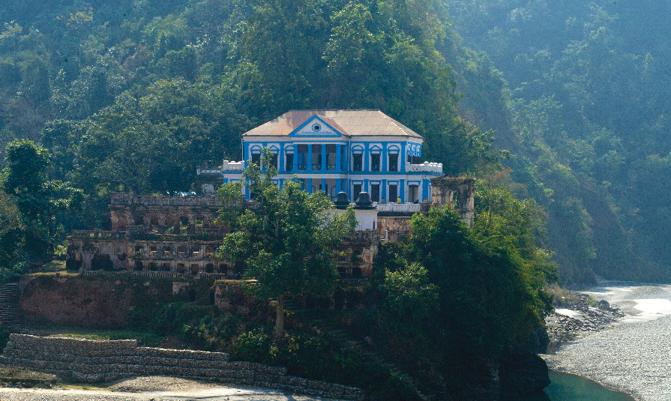Palpa
Palpa: Exploring Nepal's Hidden Gem
Nestled in the hills of western Nepal, Palpa is a picturesque district renowned for its rich history, stunning landscapes, and vibrant culture. Tucked away from the bustling tourist trails, Palpa offers ssvisitors a chance to immerse themselves in authentic Nepali life, surrounded by ancient architecture, verdant hillsides, and warm hospitality. From its historic hilltop forts to its terraced fields and traditional Newari villages, Palpa beckons travelers seeking an off-the-beaten-path adventure.
A Glimpse into the Past
Palpa's history dates back centuries, with its strategic location along the trade routes between India and Tibet shaping its cultural identity and architectural heritage. The district is home to numerous historic sites, including the hilltop fortress of Tansen Durbar, once the seat of the Palpa principality. Perched atop Srinagar Hill, Tansen Durbar offers panoramic views of the surrounding valleys and mountains, as well as a glimpse into the region's royal past.
Architectural Marvels
Palpa is dotted with architectural gems that reflect its rich cultural heritage and artistic traditions. The town of Tansen, Palpa's administrative center, boasts well-preserved Newari architecture, with intricately carved wooden facades and pagoda-style temples adorning its narrow streets. The octagonal pavilion of Tansen Durbar, with its elegant spire and ornate carvings, is a prime example of Newari craftsmanship.
Natural Beauty
Beyond its historic landmarks, Palpa is blessed with breathtaking natural beauty, characterized by lush forests, terraced fields, and panoramic viewpoints. The nearby Rani Mahal, a palatial complex built on the banks of the Kali Gandaki River, offers a serene retreat amidst verdant surroundings. The Rani ghat Palace, an imposing structure perched on the cliffs above the river, is a testament to the engineering prowess of Nepal's medieval rulers.
Cultural Diversity
Palpa is home to a diverse array of ethnic groups, including the indigenous Magar and Gurung communities, as well as Newari settlers from the Kathmandu Valley. Each group contributes its own unique traditions, languages, and customs to the cultural tapestry of the region. Visitors to Palpa have the opportunity to experience the vibrant festivals, traditional dances, and culinary delights of its diverse inhabitants, forging connections that transcend cultural boundaries.
Preserving Heritage, Empowering Communities
As tourism in Palpa grows, efforts are underway to promote sustainable development that preserves the region's natural and cultural heritage while benefiting local communities. Initiatives such as homestays, community-based tourism projects, and eco-friendly practices aim to minimize the environmental impact of tourism while providing economic opportunities for residents. By supporting these initiatives, visitors can contribute to the preservation of Palpa's unique identity and ensure that its treasures endure for future generations to enjoy.
Conclusion
Palpa, with its rich history, stunning landscapes, and vibrant culture, is a hidden gem waiting to be discovered. Whether exploring ancient forts, admiring architectural marvels, or simply soaking in the natural beauty of the Himalayan foothills, visitors to Palpa are sure to be enchanted by its timeless charm and warm hospitality. As the sun sets behind the distant peaks, casting a golden glow over the terraced fields and traditional villages, one cannot help but feel a profound sense of gratitude for the opportunity to experience the magic of Palpa, Nepal's hidden gem in the hills.

